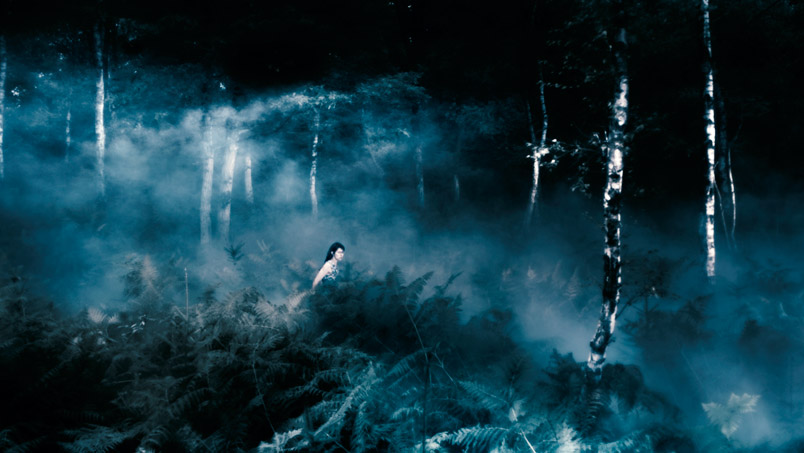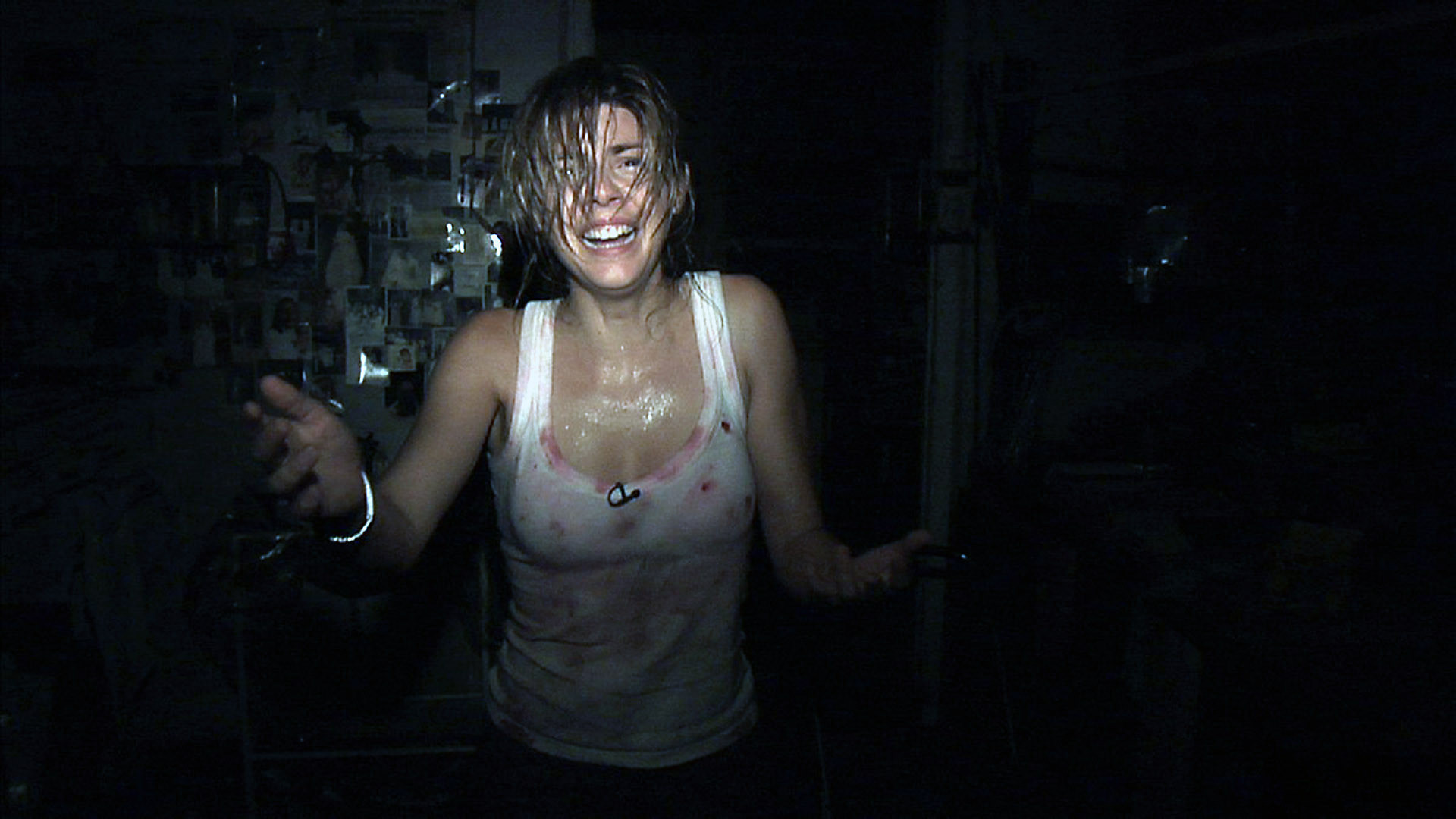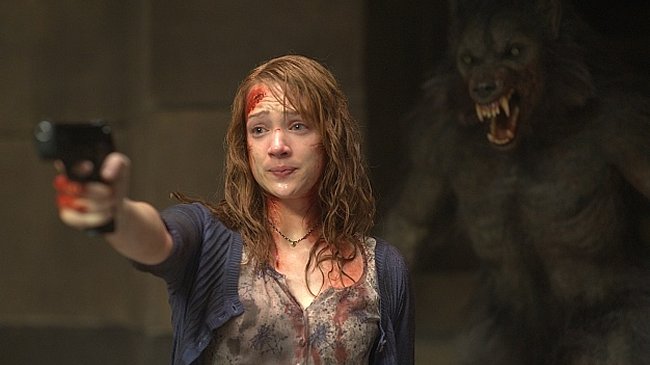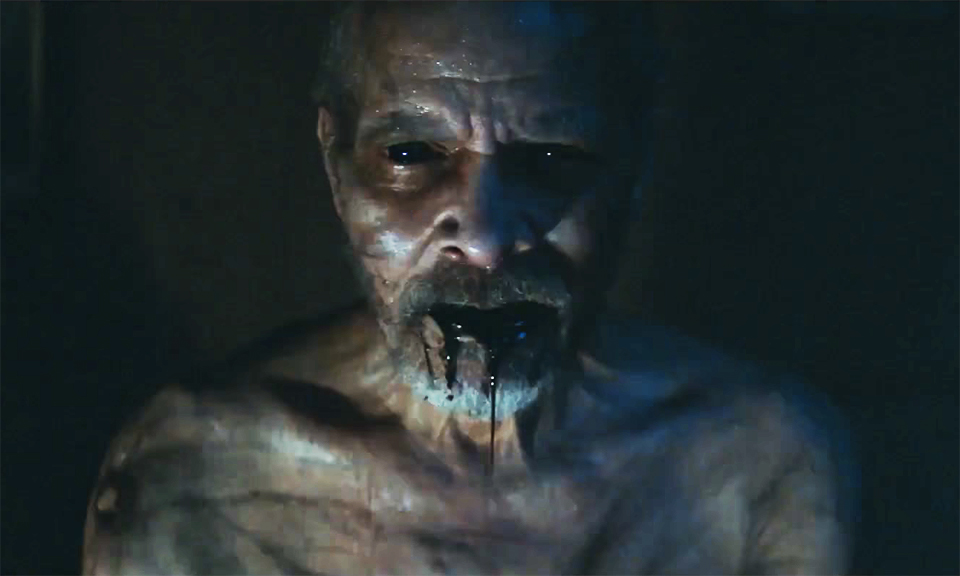10. Antichrist (2009)

During the early stages of the film, Lars Von Trier was attracted to the idea of forests as bring both a romanticized space for solace and an unforgiving place where species constantly devoured each other. A theological approach to nature as being an inherently evil, endlessly chaotic, sexually consuming entity that overtakes human desire. This is a good place to start in order to understand provocateur Trier’s infamous Antichrist, which proudly wears its Cannes’ polarizing reception as a badge crediting its dense, grotesque, and deeply unsettling material.
Trier’s first entry in the unofficially titled “Depression Trilogy,” centers on a middle-aged couple, that after the seemingly accidental death of their infant Nic – the child falls to his death from a two-story building while his parents were making explicitly photographed love – they retreat to a cabin in the woods.
That’s virtually as close as Antichrist gets to a ‘cabin’ film, as soon the father, referred to as “He” (Willem Dafoe), a therapist, begins experiencing bizarre visions, whereas the mother “She” (Charlotte Gainsbourg) exhibits overwhelmingly violent sexual conduct and sadomasochism. The film is divided into a prologue, four chapters: Grief, Pain, Despair, and The Three Beggars, and an Epilogue, which as the titles go to show, foretells of the couple’s abyssal descent and inevitable devouring of each other.
Antichrist is an experimental horror film, that is, it does not comply with the genre’s traditions in the same manner Rosemary’s Baby and The Exorcist come to embody, but rather, it generates fear through its theologically stylized themes, bizarre, grotesque, morally turbulent imagery – a slow motioned doe with a stillborn fawn hanging from her body, or a large block of wood crushing male genitalia to cite a few – and an always consistent, artistically unique atmosphere that reeks of uncanny dread. Particularly, the kinesthetic force of Antichrist’s visuals flows with an unmistakable amoral indifference that seems to have sprout from a depressed, despaired psyche.
Despite its supernatural elements, Antichrist, (which can rival Martyrs as the most “unwatchable” film on this list) holds that evil is already here, it springs from an individual’s intimate as well as somatic relationship with nature, an idea it depicts with such morbid gravitas, that some might find instantly repulsive, whereas others will find profoundly fascinating.
9. [Rec] (2007)

Frankly, there is little to add to the conversation regarding the dynamics of the found footage genre, the still exhausted horror subcategory that for a large portion of this decade, was the horror genre’s dominant presence in theaters. Both 2007 and 2008 bookend the subgenre’s creative apex through a few films that would spark a series of sequels and spin-offs: Paranormal Activity, Cloverfield, and the more noteworthy, [Rec].
Jaume Balagueró’s and Paco Plaza’s Spanish zombie horror takes place in Barcelona and centers on a late-night reporter, Ángela Vidal (Manuela Velasco) and her cameraman Pablo (Pablo Rosso), who while documenting the nightshift of a local firemen team, they follow the latter on an emergency call to an apartment building. Both reporters and the firefighters soon discover that they have been quarantined inside the premise in order to contain a spreading infection that turns people into vicious ghoulish creatures.
In contrast to the rather underwhelming sequels (same as the Paranormal series), the short 75-minute-long [Rec] does not waste time in plot explanations that would detract viewers from its horror, but swiftly provides enough context, before plunging into a spiraling hellish landscape and quest for survival.
The highly kinesthetic, sporadic camera movements – the flesh and bloodstream of the film – consistently riles up tension and during its highest moments, showcase some of the genre’s most intense, excruciating sequences. Moreover, the amateurish control of the camera as well as its “homevideo” quality, not only heightens verisimilitude but also the impression the rabid creatures leave on the viewer: the shocking motion blurring of their demonic faces, the second guessing as to whether or not one will suddenly pop out, and as the characters desperately run towards safety, the always-teasing question “is the monster right behind them?”
Lastly, [Rec] is a successful rendition of the found footage traditions because it faithfully plays to both its strengths and weaknesses. It is silly, overtly simple, and smartly rejects the high stature of traditional storytelling, in order to provide a satisfying, macabre rollercoaster.
8. The Cabin in the Woods (2012)

Leading viewers to believe it is the most conventional ‘cabin’ horror film ever, The Cabin in the Woods uses its simple premise to subvert both preconceptions and traditions of the genre, and in the process, it becomes a high concept metafiction while also providing a fresh and hilarious scarefest. Under the sly pen and connoisseurship of Joss Whedon and “Buffy the Vampire Slayer” collaborator Drew Goddard, the highly self-conscious “Cabin in the Woods” not only satirically exposes and reduces the genre’s mysticism to a bureaucratic ritual, but also deliberately follows its tropes and cause-and-effect schemes.
The Cabin in the Woods intentionally repeats the traditional premise of the group of college friends, who venture to a cabin deep in the woods to spent their vacations. Each member of the group is representative of a stereotype we are familiar with as viewers: the well-meaning “good girl” Dana (Kristen Connolly), beefcake alpha jock Curt (Chris Hemsworth), his easygoing sorority girlfriend Jules (Anna Hutchison), the hilarious conspiracy theorist and pothead Marty (Fran Kranz), and the nerdy stud Holden (Jesse Williams).
During a casual game of truth or dare, a wandering Dana finds a diary inside the obligatory “hey-don’t-go-in-there” basement and reads its Latin prose out loud, triggering the reanimation of a small army of rabid undead in the fashion of Evil Dead, which pretty much foretells the events to follow.
However, the real stars of the show are actors Richard Jenkins and Bradley Whitford who lead the film’s innovative what-if angle as the bantering senior technicians, who from a laboratory’s control hub, orchestrate the events the five friends must confront in order perform an ancient ritual. What’s more, this laboratory doubles as a monster zoo for familiar horrors of the genre: werewolves, murderous clowns, basilisks, a saw head imbedded Hellraiser-esque man, stampeding unicorns, and even mermans (male mermaids), you name it.
Despite losing a portion of its edge while swapping the intrigue of its parody for a straightforward, albeit satisfying bloodbath, “The Cabin” stands out from other anti-genre films due to its unwavering commitment to self-parody, courtesy of its writers, as well as a metafictional triangular relationship between artist, source material, and audience. Perhaps Whedon and Goddard are the scientific duo searching for alternative ways to innovate their work, while the audience is the hungry monster always demanding blood.
Described by Whedon as a “very loving hate letter,” The Cabin in the Woods is especially tailored for horror fanboys seeking to sink their teeth into the genre’s tradition, but should, if serendipitous, watch ‘The Cabin’ under the impression that it is just another ‘cabin’ film.
7. The Babadook (2014)

“If it’s in a word, it’s in a look, you can’t get rid of The Babadook.” The rhyming slogan of Jennifer Kent’s feature film debut encapsulates its fable-inspired notion that the most prevailing, inescapable horrors are found in our own collective unconscious. Despite its grim appearance, the Babadook – a demonically sardonic, coat-and-top-hat wearing creature that appears to have creeped out from a German Expressionist prints and drawing gallery – stands utmost as a universal metaphor for the repressed fears, self-doubts, and unspoken desires that inside the film’s context, befalls single parenting and fatherless childhood.
The Babadook begins nearly seven years after the devastating car accident that killed soon-to-be-father Oskar (Benjamin Winspear) as he was hurrying his pregnant wife Amelia (Essie Davis) to the hospital to deliver their child, both of which survived the event. In the present, when he’s not stirring troubles at school, the high-strung and emotionally dependent 6-year-old Samuel (Noah Wiseman’s performance easily ranks among the best by a child actor in a horror film of this century) spends his time building homemade weapons with the hope of becoming his mother’s protector from monsters.
Still traumatized after the incident, Amelia, now a nurse in a home for the elderly, sees Samuel as a constant reminder of her husband’s death and cannot bring herself to celebrate his birthday on the actual day. One night, Amelia reads Samuel a pop-up storybook, Mister Babadook, which sets off a series of supernatural horrors that perpetrate their daily lives.
Kent is successful in crafting a visual design that not only mirrors the everlasting state of mourning of the mother-son duo, but also it is strikingly evocative of storybooks and classic fairy tales. The ever-consistent color palette of opaque blues pit against greys and blacks, the symmetrically tailored production design and stop motion animation, which Kent applies to great effect, all illustrate or allegorize the characters’ subjective reality.
In order to explore the impact Oskar’s death and absence had on the mother-son’ toxic, emotionally clinging relationship, Kent cleverly transposes the viewer’s empathy by smoothly alternating between both characters’ perspectives. First through Amelia’s eyes, we are shown how intense and volatile Samuel and afterwards, turning more meek and reasonable, Samuel’s perspective reveals Amelia to be the puppet or embodiment of the eponymous monster.
Ultimately, The Babadook achieves an ideal balance between traditional horror – the jump scares, monsters, and dramatic heights – while offering both the visual reinvention and most importantly, the profound emotional depth that characterizes recent art house horror films. By its conclusion, as the worms below their backyard, the unchanged body count, and Amelia’s amicable terms with the guest living in their basement goes to show, The Babadook contends that our innermost fears, emotional scars, and prevailing flaws are a part of our everyday life, and that perhaps, it should stay that way.
6. It Comes at Night (2017)

Right from the start, there are elements in Trey Edward Shults’ It Comes at Night that are immediately familiar – the cabin, a mysterious infection, the gas masks – altogether a highly textured, strikingly apocalyptic landscape. However, Shults’ sophomore film is not a traditional horror film, even calling it unconventional might be misleading for some.
Then why is it part of a “best horror films” list? Although there is no official category, some referring to it as post-horror while others as reverse horror, It Comes at Night rejects the guidance of traditional horror tropes – the ritualistic clues that viewers use to foretell events as well as the film’s credentials – in order to create a sense of vulnerability to the psychological undercurrents one must confront in a conceptual, seemingly non-eventful, yet disorienting darkness.
Following the vein of The Witch, the latest A24 produced minimalist horror It Comes at Night centers on a family taking shelter in a secluded forest (strikingly evocative of the critically acclaimed videogame The Last of Us) against a lethal contagious virus. The patriarch, Joel Edgerton’s Paul, his wife Sarah (Carmen Ejogo), and his subservient, nightmare plagued 17-year-old son Travis (Kelvin Harrison Jr.).
After they are forced to kill and burn the corpse of Sarah’s father, Bud (David Pendleton), who contracted the disease, the family forms a shaky alliance with a younger family with the common interest of self-protection. Frustrated by his limited surroundings, Travis becomes drawn to the more accessible male figure Will (James White’s Christopher Abbott) and his wife Kim (Riley Keough), who along with the couple’s son, set the stage for the growing tensions, distrust, and paranoia that would eventually consume both families.
In terms of visuals, Shults masterfully maneuvers and exults darkness – weak lanterns, in-scene lights as the sole source, long corridors and bedrooms with minimal lighting – in order to create a unique atmospheric horror. Supported by an interplay with aspect ratio for claustrophobic effect and Brian McOmber’s eerie, unnerving compositions, which if familiar with Shults’ Krisha, you should have a good idea of how mentally straining Shults’ audiovisual designed space can become.
Despite its few ventures into body horror, It Comes at Night’s horror weights on the paranoia, guilt, and distrust it places on its characters shoulders, who find their undoing not in what lies outside, but what they fear would come out of it. Although lacking in zombies, torture scenes and sensationalist jump scares, It Comes at Night is not only profoundly horrifying in the answers it provides to its existential dread, but it could very well be among the pioneering films of a new auteur-horror trend in the same fashion as Nicolas Roeg’s Don’t Look Now and Polanski’s Repulsion.